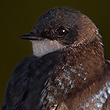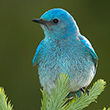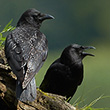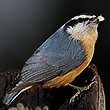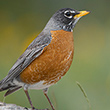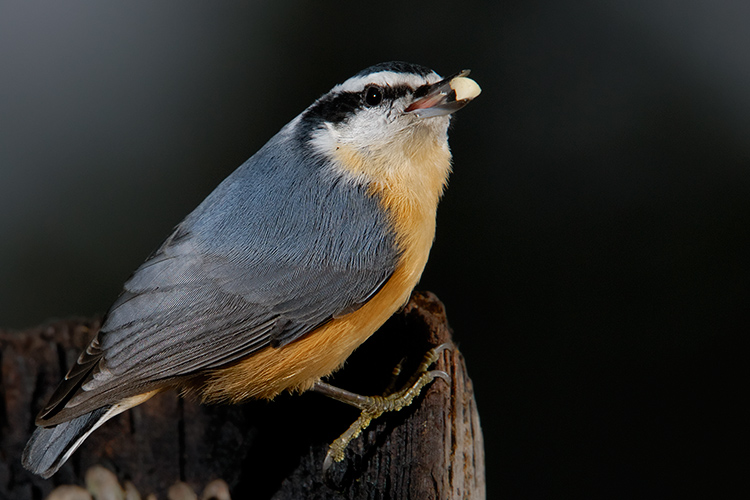
In the Field
Red-breasted Nuthatch with Seed. Findlay Creek, BC, Canada. January 7, 2006.
Like Black-capped Chickadees, Red-breasted Nuthatches are very common small songbirds found throughout most of North America. In fact, during the winter they're often found in mixed-species flocks with chickadees, woodpeckers and even creepers. Also like Chickadees, Red-breasted Nuthatches don't spend much time sitting still and photographing them can definitely be a frustrating process.
When close-up, many common birds have striking patterns and detail in their plumage. This common little bird is no different - the slate blues of their back contrast beautifully with their orange breast and dark eye-line. To bring out the detail in this bird's plumage I used a fairly intricate lighting plan (check under the "Behind the Camera" tab if you're interested). In this case the dark background is NOT an artifact of my use of flashes, but is simply the natural background of heavy Douglas Fir trees that happened to be in the shade.
Behind the Camera
Red-breasted Nuthatch with Seed. Findlay Creek, BC, Canada. January 7, 2006.
Digital Capture; Compressed RAW (NEF) format; ISO 200.
Nikon D200 with Nikon 200-400 mm f/4G ED-IF AF-S VR lens @ 380 mm (570 mm equivalent with digital conversion factor) supported on Gitzo 1348 carbon fibre tripod with Wimberley head. SB-800 main flash (master) equipped with Better Beamer extender mounted on Really Right Stuff flash bracket. Two SB-R200 wireless flash units positioned to side and behind subject to highlight plumage detail. VR turned to "On" and in "Normal" mode.
1/60s @ f11; no in-camera compensation from matrix-metered exposure setting; main flash and side light fill at -0.3 stops (i-TTL mode), back fill at -0.7 stops (i-TTL mode).
At the Computer
Red-breasted Nuthatch with Seed. Findlay Creek, BC, Canada. January 7, 2006.
Details to follow.
Conservation
Red-breasted Nuthatch with Seed. Findlay Creek, BC, Canada. January 7, 2006.
Species Status in Canada*: This species is not designated as at risk.
The Red-breasted Nuthatch (Sitta canadensis) is a common resident of North America's boreal forests. This is a species where more people have probably heard the species than have seen it - its unique “yank, yank, yank” call is very distinctive and heard in many of North America’s forests.
Like the White-breasted Nuthatch, the Red-breasted Nuthatch typically climbs head-down on the trunk of trees probing for insects and cached seeds. In winter it readily joins mixed species flocks that commonly contain chickadees and woodpeckers.
One unique characteristic of the Red-breasted Nuthatch among all of the North American nuthatches is that it regularly undergoes irruptive winter movements that appear to be driven primarily by a shortage of winter food on their breeding grounds. During irruption years, large numbers of individuals often invade uncharacteristic habitats as far south as the Gulf Coast of Louisiana and the desert washes of northern Mexico. With its propensity for long-distance movements, the Red-breasted Nuthatch is the only North American nuthatch to have crossed the Atlantic to Europe as a vagrant.
Because of the irruptive movements the Red-breasted Nuthatch is a difficult species to obtain consistent annual estimates of population sizes and density. At this point the best available data shows relatively stable populations over time (i.e., no clear trend of increases or decreases).
*as determined by COSEWIC: The Committee on the Status of Endangered Wildlife in Canada



















